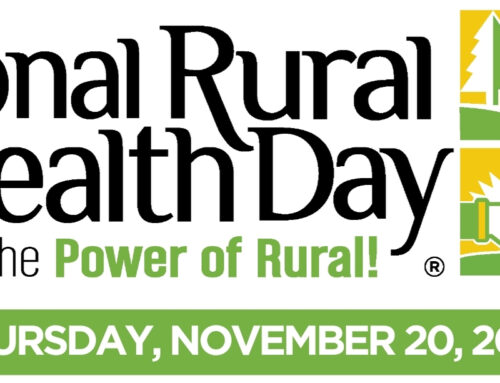Thanksgiving day is an opportunity to gather together with the people we love to celebrate the things in our life that have gone well and for which we are grateful. It is also one of the busiest days of the year for emergency rooms, for both people and animals! According to the National Fire Protection Association, it is also the peak day for home cooking fires, resulting in property damage, injuries and deaths.
Top causes of emergency room visits include cuts and burns, food poisoning, chest pain, overexertion injuries, stress related symptoms, and alcohol-related accidents.
Turkey frying fire videos trend at this time of year, demonstrating all the errors that can be made when frying a turkey. Make sure the turkey is completely thawed all the way through and dried, even on the inside. Turn off the burner when lowering the turkey into the hot oil so that if any splashes out, it will not be ignited by the burner. And make sure to not overfill the oil – a good way to determine the level of oil you will need is to:
- Put the turkey into an empty pot and fill with water until the turkey is covered by about an inch of water, do not fill past the max fill line! There should be at least 3” of space in the pot above the water level.
- Remove the turkey and then measure the level of the water.
- Mark the level of the water with a marker on the outside of the pot, or measure the number of quarts on the side of the pot >> that is how much oil you should put in the empty pot.
- If the level is above the max fill line with the turkey, you need a bigger pot.
- Thoroughly dry the pot before putting in the cooking oil.
To reduce the risk of a kitchen fire, always stay with foods cooking on the stove, and don’t leave the house with anything cooking in the oven; put away matches and lighters, make sure candles and other open flames are out of reach of children; keep stove tops clear of food packaging and flammable materials. Make sure electric cords are in good condition and don’t overload outlets; small electrical appliances should each be plugged into their own wall outlet, not a power strip, and unplugged when not in use.
Cuts and burns can occur in the kitchen, especially when there are a lot of people working in close quarters, children may be underfoot, and alcohol may be consumed. Use care when using kitchen tools and gadgets that may be new or only used rarely, keep cords out of the way to avoid accidentally pulling an appliance off the counter, carry things like bowls of hot gravy with care to avoid spills that can burn, and save the adult beverages for when the preparation is done and it’s time to relax. During clean up, take care with glassware that could break in the sink and cause a bad cut.
A lot of the traditional foods prepared for Thanksgiving are particularly prone to rapid bacterial growth, foods like turkey, dairy, eggs, seafood, and cooked starches. Keep cold food cold and hot food hot, avoiding the danger zone between 40°F and 140°F. At room temperature, bacteria in food can double in 15-20 minutes. Use a meat thermometer to make sure all parts of the turkey, and stuffing if cooked inside the bird, have reached 165°F. Divide large dishes into small containers and refrigerate within 2 hours of preparation. Using small containers allows the food to cool more quickly and avoids raising the internal temperature of the fridge, which can mean all of the food enters the danger zone and grows bacteria.
For pets, a lot of foods that we have around holidays are dangerous or even toxic. Feeding dogs high fat foods like turkey skin can lead to pancreatitis, grapes and raisins can cause kidney failure, onions and garlic can cause anemia. Leaving food unattended where a pet can gain access and overeat or eat something bad for them can result in spending the holiday in a veterinary ER instead of at home.
Overeating, especially foods that may be higher in fat, sugar, and salt than your usual diet can lead to gastric upset, indigestion, spikes in blood pressure, even acute pain that could feel like a heart attack. Thanksgiving and football go together like rock and roll, and when that means a family game of touch football, strains, sprains, and other injuries can result.
Whether you are hosting or visiting, preparing or traveling, Thanksgiving can become a very emotionally stressful time. Migraines, panic attacks, exhaustion, or flare-ups of existing mental health struggles could mean needing emergency medical care.
Travel, altitude, and alcohol consumption also contribute to dehydration which can result in worsening physical and mental health. Family celebrations often include consuming more alcohol than one might normally, as well as the potential for children to consume alcohol that may be left sitting within reach. Toddlers and children who have drunk alcohol may only seem groggy, fussy, and ready for a nap; however a child consuming alcohol should be treated as an emergency.
This Thanksgiving let’s do our best to keep ourselves and our family and friends safe and don’t let accidents or illness ruin what should otherwise be a joyful get-together.
P.S. be careful this weekend if you are putting up winter decorations – falls while decorating are another cause of ER visits during the Thanksgiving weekend.
Additional information and resources for holiday and winter safety with social media you can share with your family and friends (available in Spanish): https://www.ready.gov/holiday-safety-social-media-toolkit
US Fire Administration Kitchen Fire Safety video: https://www.youtube.com/watch?v=YytK3zBQ0DU&t=81s
Safety tips and resources from the National Fire Protection Association: https://www.nfpa.org/education-and-research/home-fire-safety/thanksgiving#safety-tips






